|
 |
■Bioresources information is available at the following URLs
|
 |
|
Introduction to Resource Center 〈NO.33〉 Ten-year history of the Drosophila Genetic Resource Center - I -
Masa-Toshi Yamamoto (Director, Drosophila Genetic Resource Center, Kyoto Institute of Technology)
The 10th anniversary event and the world's finest resource center
 We organized the "International Symposium on Drosophila BioResources: Pioneering life science research with Drosophila Genetic Resources," which was held at the Enryakuji Kaikan, Enryakuji, Hieizan, on March 17 and 18, 2010.
(Picture)。 We organized the "International Symposium on Drosophila BioResources: Pioneering life science research with Drosophila Genetic Resources," which was held at the Enryakuji Kaikan, Enryakuji, Hieizan, on March 17 and 18, 2010.
(Picture)。
This symposium was held to celebrate the 10th anniversary of the Drosophila Genetic Resource Center (DGRC) and was organized as a bioscience research symposium that fully harnessed the advantages of Kyoto, which was a long-cherished dream of mine. Kyoto is known to everyone as a reservoir of Japanese culture. In addition to science, spiritual activities in Kyoto pertaining to philosophy, art, and religion are widely acclaimed. From this perspective, I had been planning to organize a collaborative symposium that would effectively link science and the ever-expanding cultural activities. In Kyoto, there are numerous temples and people who ponder not only about the happiness of other people but also the eternal prosperity of human beings and the harmonization and coexistence with others. In addition, many scientists wish the global-scale survival and conservation of diverse biological species. I considered that it was important for us to take an opportunity to get together and to communicate with each other in plain language regarding the achievements that we have sought and practiced, and Kyoto was the best place for realizing this. Consequently, we succeeded in organizing this collaborative symposium. |
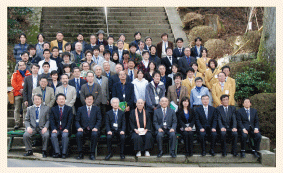
Picture: Group photo of the symposium attendees at Enryakuji, Hieizan
Ven. Ryusho Kobayashi, Senior Priest of Enryakuji Temple (center), surrounded by Prof. Kazuo Moriwaki (right), Prof. Yoshimichi Ejima, President of Kyoto Institute of Technology, Mr. Takao Kuramochi (Deputy Director-General Minister, Ministry of Education, Culture, Sports, Science and Technology), Prof. Yuji Kohara (Director of National Institute of Genetics), and Prof. Masa-Toshi Yamamoto (left). |
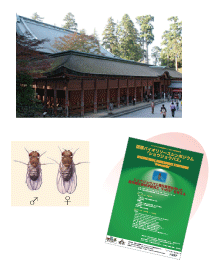 |
Temples near the DGRC, such as Daikakuji, Tenryuji, Myoshinji, and Ninnaji, were considered as the venue for the symposium. However, since large rooms in these temples are in Japanese style, we imagined that it would be difficult to ask participants from overseas to kneel on their knees and even for Japanese participants to do so for a prolonged time. Accordingly, we took the plunge and inquired about the possibility of organizing the symposium at Enryakuji, Hiezan. Since the route to the hall in Hieizan is closed off to traffic in winter, we expected that people would neither withdraw from the hall during the symposium nor would they be allured by the glimmering city lights at night. Thus, we could lodge together at the symposium venue. Among other things, we organized a lecture presented by Ven. Ryusho Kobayashi, who is a senior priest of Enryakuji Temple and the calligrapher of the face plate of Gakudo Hall, which was contributed by Nippon-Shinyaku Co., Ltd. Consequently, we were able to realize the symposium that we had longed for. |
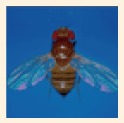 |
A picture of the Drosophila that was modeled for the design of the Drosophila Genetic Resource Center's logo (a D. simulans mutant spreading its wings; a so-called spread mutant).
This was one of the pictures presented to Prof. Kosuke Kimura, a former president of the Kyoto Institute of Technology, when he designed the logo. |
 As another primary event, we also organized a symposium entitled "National BioResource Project—the development of a high-quality genetic resource, KYOTO BRAND" at the Kyoto Institute of Technology on October 23, 2009. The aim of the National BioResource Project thus far has focused on becoming a world-class resource center; however, the criteria that define what it means to be a world-class center are debatable. It is crucial for each resource community to define whether it is determined by the number of biological species as resources inherent to our country, the number of strains maintained, or the number of strains distributed. The number of Drosophila strains maintained in the DGRC has become the highest in the world and the center's distribution of strains has also increased greatly. Consequently, the status of the DGRC is now comparable to that of the Drosophila Stock Center in the US, and we are proud that the DGRC is a world-class resource administrative institution. However, I believe that in the future the DGRC should aim at improving and delivering reliability to researchers rather than maintaining and distributing the world's highest number of Drosophila resources. In order to realize this, we proposed "KYOTO BRAND" as a process of developing a foundation for quality control. Our goal is to develop high-quality Drosophila strains that are trusted by researchers as the strains harboring the correct mutations—strains that researchers will use only if they know them to be of "KYOTO BRAND." The symposium also stated the intent to improve our resources such that they are of world-class quality and to strengthen our partnerships with others. As another primary event, we also organized a symposium entitled "National BioResource Project—the development of a high-quality genetic resource, KYOTO BRAND" at the Kyoto Institute of Technology on October 23, 2009. The aim of the National BioResource Project thus far has focused on becoming a world-class resource center; however, the criteria that define what it means to be a world-class center are debatable. It is crucial for each resource community to define whether it is determined by the number of biological species as resources inherent to our country, the number of strains maintained, or the number of strains distributed. The number of Drosophila strains maintained in the DGRC has become the highest in the world and the center's distribution of strains has also increased greatly. Consequently, the status of the DGRC is now comparable to that of the Drosophila Stock Center in the US, and we are proud that the DGRC is a world-class resource administrative institution. However, I believe that in the future the DGRC should aim at improving and delivering reliability to researchers rather than maintaining and distributing the world's highest number of Drosophila resources. In order to realize this, we proposed "KYOTO BRAND" as a process of developing a foundation for quality control. Our goal is to develop high-quality Drosophila strains that are trusted by researchers as the strains harboring the correct mutations—strains that researchers will use only if they know them to be of "KYOTO BRAND." The symposium also stated the intent to improve our resources such that they are of world-class quality and to strengthen our partnerships with others.
|
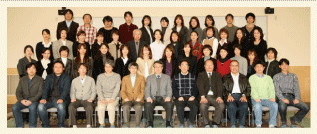
Picture: Group photo of the attendees of the 10th anniversary symposium of the DGRC.
Initiated by a single person in 1999, the DGRC has grown to this extent. This is undoubtedly an outcome of the efforts of all the contributors.
|
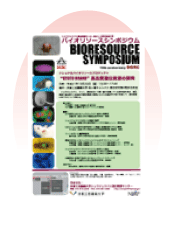 |
Current framework of resource administration |
 I will introduce one of the resource administration activities carried out at the DGRC. This is an example of consultations related to the transfer of Drosophila genetic resources and the deposition of developed strains.On an application form that is used in applications for large-scale research funds granted by overseas research support foundations, it is stated that applicants should mention where and how developed genetic resources would be preserved and utilized as useful materials upon the acceptance of the application and the research achievement. We are then informed in advance that the developed resources will be deposited in our resource center. Here is an example of the strains deposited in the fiscal years 2008 and 2009. I will introduce one of the resource administration activities carried out at the DGRC. This is an example of consultations related to the transfer of Drosophila genetic resources and the deposition of developed strains.On an application form that is used in applications for large-scale research funds granted by overseas research support foundations, it is stated that applicants should mention where and how developed genetic resources would be preserved and utilized as useful materials upon the acceptance of the application and the research achievement. We are then informed in advance that the developed resources will be deposited in our resource center. Here is an example of the strains deposited in the fiscal years 2008 and 2009.
①Protein trap lines developed at Cambridge University (Fig. 1:http://www.flyprot.org/)
A European research group promoted research related to protein trap lines developed at Cambridge University and made inquiries to us. The developed resources were subsequently deposited in the DGRC in 2009. The strains have now been released and distributed around the world.
②Selective depositions of important strains from Szeged Drosophila Stock Centre, University of Szeged, Hungary, upon closure of the center (Fig. 2:http://expbio.bio.u-szeged.hu/fly/)
Most of the important strains at this center were developed by the collaborative work of a Drosophila researchers’ consortium in the EU nations, and we now maintain a comprehensive collection of deletion mutant strains, which are particularly important for Drosophila research (http://www.drosdel.org.uk/).
|
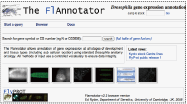
Fig. 1: Website describing the protein trap lines developed at Cambridge University |
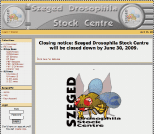 |
Fig. 2: Szeged Drosophila Stock Centre, University of Szeged, Hungary, had maintained and distributed insertion lethal mutant strains developed by a large-scale screening program using transposable P element and subsequently by genome-wide FRT-insertion mutants developed by the European Consortium. However, the center was shut down in 2009 due to a stagnation of genetic resource preservation projects in the EU and a limitation of laboratory-based administration of resources. |
Several universities in the US have also made inquires to us regarding the short-term maintenance of strains as near-future projects. These resources consist of a number of different strains harboring a transposon inserted in a unique position in the genome. Even if the strains are slightly different from what researchers intended to develop, they could still be useful for the convenient observation of the phenotype of strains in which specific parts of organs or tissues fluoresce during a specific period of development. These transposons are being highly developed and further improved, and consequently it is now possible to examine more specific genetic effects(Fig. 3:http://flypush.imgen.bcm.tmc.edu/lab/). However, since the current method cannot control the insertion position in the genome, a novel method will be used to newly develop 2000–5000 strains. As a consequence, the value of the old strains is rapidly decreasing. Accordingly, the speed of Drosophila research and the quick decision of whether to maintain or scrap the resources, are becoming increasingly important.■ (to be continued)
|
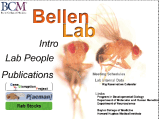
Fig. 3:Website of Bellen Lab |
|
|
|
The URL shortening service is a web application that simply shortens the URL. Although services of this sort have been provided for a long time, they have recently become widely used due to the popularity of microblogs such as Twitter, in which the number of letters a user can use in the URL is limited.
For example, the following URL contains the strain information of an organism.
However, since the URL is too long, it is occasionally impossible to post it on a microblog that has a limitation on the number of letters in the URL (maximum 140 letters in Twitter).
http://txsearch.ddbj.nig.ac.jp/txsearch/txsearch.TXSearch?tx_Clas=scientific+name&
tx_Name=Synechocystis+sp.+PCC+6803&tx_Rank=All&tx_Rmax=10&tx_Dcls=yes&
tx_Lang=en&tx_Mode=DETAIL&tx_Id=1148&tx_R_Id=0
|
In addition, when we send a long URL via email, the URL sometimes continues across several lines and thus it will be difficult to access the website.
Here, I would like to show the process of URL shortening by using a well-known URL shortening service called "bit.ly."
|
 |
|
2. Type the URL that needs to be shortened in the following space, "Enter your long link or file here:". |

|
3. The shortened form of the URL will be displayed upon pressing the Shorten button. |
 |
|
When someone accesses the shortened URL(http://bit.ly/bHHEy3), the webpage of the long URL will be displayed (※).
(※)Please read the terms of service regarding the rules pertaining to the expiration date for the shortened URL.
(Shigo Sakaniwa)
|
|
|